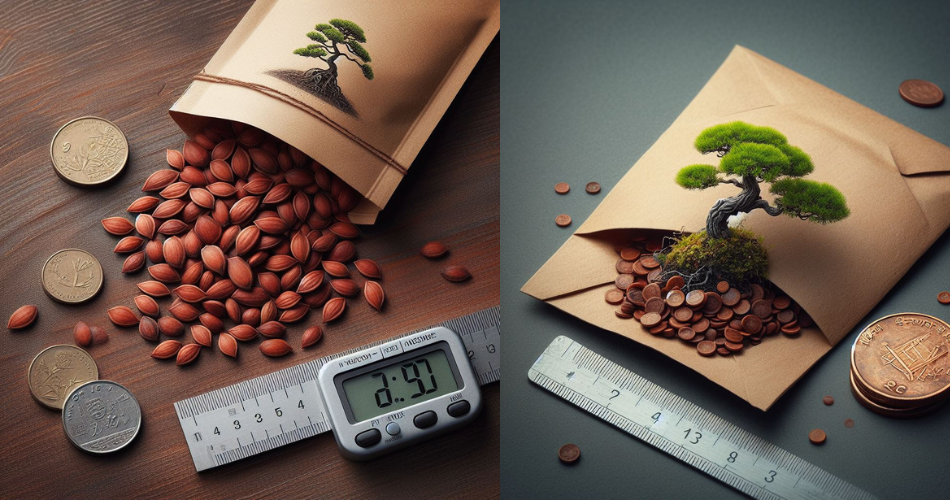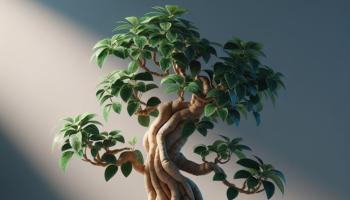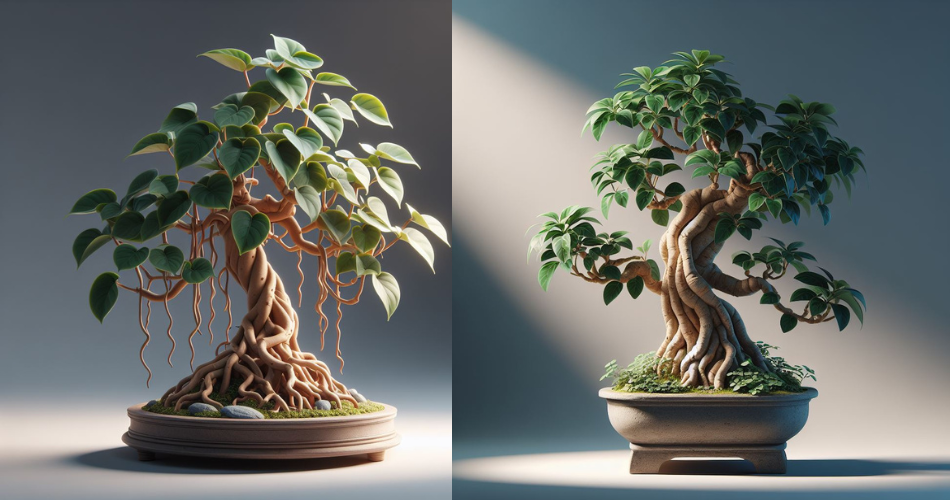
Embarking on the art of bonsai is a journey into the delicate balance of nature and human craftsmanship. Selecting the right tree is a crucial step in this transformative process. In this comprehensive guide, we will not only introduce you to ten trees that make excellent bonsai specimens but also delve into the specific care techniques and styling considerations that will help you turn them into miniature masterpieces.
The History and Origins of Bonsai
The history of bonsai is as fascinating as it is ancient. Originating in China over 1,000 years ago, this art form soon made its way to Japan where it truly blossomed. The Japanese took bonsai to a whole new level, treating it as a spiritual practice and refining the techniques to create masterpieces that ooze elegance and harmony. It’s amazing to think that these tiny trees have been around for centuries, quietly spreading joy and zen vibes.
Factors to Consider when Choosing Bonsai Tree Species
Climate and Environmental Considerations
Before diving headfirst into the world of bonsai, it’s vital to consider your climate and environment. Just like humans, trees have preferences too. Some thrive in the sunny warmth, while others prefer the cool shade. Understanding which species can survive and thrive in your specific conditions is the first key to success in bonsai cultivation.
Growth Characteristics and Size
Size does matter when it comes to bonsai. Different tree species have varying growth characteristics, which can determine the style and size of your miniature masterpiece. Some trees grow tall and slender, while others are stubby and squatty. Deciding whether you want a towering giant or a petite pipsqueak will help narrow down your options.
Rooting and Trunk Formation
You know what they say, a good bonsai starts from the roots. The root structure and trunk formation of a tree are crucial elements in bonsai design. Some species have impressive surface roots that add drama and flair to the overall aesthetic, while others have more delicate and refined root systems. Finding a tree with the right kind of roots and a trunk that speaks to your artistic sensibilities is paramount.
Exploring a Variety of Bonsai Tree Species
Now that we’ve covered the basics, it’s time to dive into the top 10 trees that are perfect for bonsai creation. From ancient pines to delicate maples, this list will introduce you to a world of possibilities. So get your tiny pruning shears ready, because you’re about to embark on a bonsai adventure like no other.
10 Trees that Make Good Bonsai Specimens:
1. Japanese Maple (Acer palmatum): The Artistic Elegance The Japanese Maple, with its delicate leaves and stunning autumn colors, is a favorite among bonsai enthusiasts. In this section, we will explore the cultural significance of this tree, the best pruning techniques to maintain its intricate form, and tips for ensuring its vibrant foliage throughout the seasons.
2. Juniper (Juniperus): The Symbol of Strength Known for its hardiness and evergreen charm, the Juniper holds a special place in the world of bonsai. We’ll discuss the various Juniper species suitable for bonsai, techniques for styling its distinctive foliage, and the symbolic importance of this tree in bonsai culture.
3. Trident Maple (Acer buergerianum): A Threefold Beauty The Trident Maple’s three-lobed leaves and exquisite autumn hues make it a captivating bonsai choice. Learn about its unique characteristics, optimal growing conditions, and the art of wiring and shaping to bring out the best in this adaptable and resilient species.
4. Chinese Elm (Ulmus parvifolia): Resilience in Simplicity The Chinese Elm, celebrated for its simple yet elegant appearance, is an ideal tree for both beginners and experienced bonsai enthusiasts. Discover the secrets to creating a well-proportioned and resilient Chinese Elm bonsai, including pruning techniques and potting considerations.
5. Pine (Pinus): Embracing the Rugged Elegance Pines bring a rugged elegance to the bonsai world with their long needles and distinctive bark. In this section, we’ll explore the unique challenges and rewards of cultivating Pine bonsai, including styling techniques, needle reduction, and seasonal care tips.
6. Ficus (Ficus retusa): Tropical Allure Transport yourself to the tropics with the Ficus, a versatile and forgiving tree for bonsai cultivation. Explore the different Ficus varieties suitable for bonsai, along with essential care practices, wiring techniques, and strategies for creating impressive aerial root structures.
7. Olive (Olea europaea): A Symbol of Peace and Beauty The Olive tree, with its silvery leaves and cultural symbolism, adds a touch of Mediterranean charm to bonsai collections. Dive into the world of Olive bonsai, learning about its unique growth habits, styling preferences, and tips for maintaining its health and vitality.
8. Serissa (Serissa foetida): The Snow Rose Often referred to as the Snow Rose, the Serissa captivates with its small, star-shaped flowers and fine foliage. Explore the challenges and rewards of cultivating a Serissa bonsai, including pruning techniques, flowering management, and strategies for creating a harmonious design.
9. Crabapple (Malus): Blossoms in Miniature Discover the enchanting beauty of the Crabapple tree in miniature form. This section will cover the selection of suitable Crabapple varieties, techniques for promoting blossoms and fruiting, and the art of styling to capture the essence of a full-sized tree in a compact bonsai.
10. Azalea (Rhododendron): A Burst of Color Conclude your journey with the vibrant Azalea, a burst of color in the bonsai world. Explore the specific care requirements for Azalea bonsai, including soil and watering considerations, pruning techniques to enhance flowering, and strategies for creating a bonsai that radiates natural charm.
Conclusion: As you delve into the intricate world of bonsai, these ten remarkable trees will serve as companions on a journey of beauty, resilience, and the timeless artistry of nature in miniature form. Whether you’re a beginner or a seasoned enthusiast, this guide aims to equip you with the knowledge and inspiration needed to turn these miniature giants into living works of art within your own bonsai collection. Happy bonsai cultivation!
FAQ
1. Can any tree be used for bonsai?
While not all tree species are suitable for bonsai, there is a wide variety of trees that can be used for this art form. The selection of a tree should be based on factors such as its growth characteristics, size, and suitability to the climate and environment in which it will be grown.
2. How long does it take to create a bonsai tree?
Creating a bonsai tree is a long-term process that requires patience and dedication. The time it takes to transform a regular tree into a bonsai can vary depending on the species, the desired style, and the techniques used. It can take several years or even decades to develop a mature and aesthetically pleasing bonsai tree.
3. What care do bonsai trees require?
Bonsai trees require regular care and attention to thrive. This includes proper watering, pruning, and shaping of the tree. Additionally, bonsai trees need to be placed in suitable environments that provide the right amount of light and temperature. Each tree species may have specific care requirements, so it is essential to understand the needs of the particular tree you are working with.
4. Can I create a bonsai tree as a beginner?
Absolutely! Bonsai art is accessible to beginners, and it can be a rewarding and enjoyable hobby. Starting with beginner-friendly tree species, learning basic techniques, and seeking guidance from experienced bonsai enthusiasts or joining a bonsai club can help beginners get started on their bonsai journey.



















